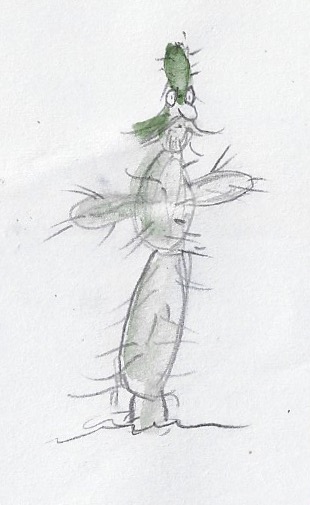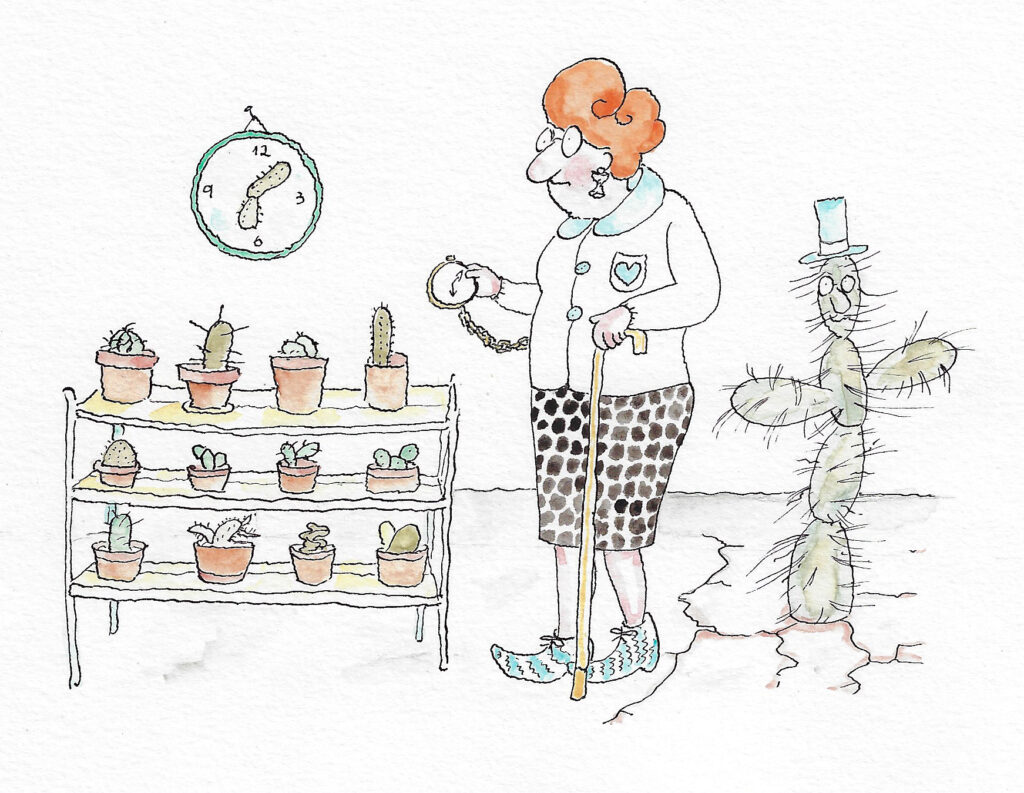I was in an uber on my way to my fifth chemo session in Mexico City. I didn’t want to go. I dug my heels into the car floor, as if I might brake, Flintstones style.
The driver, not getting any conversation from me, turned the radio to a station that plays pop from the ’80s, in English. Bohemian Rhapsody came on. My favorite, Freddie Mercury.
“Freddie Mercury, el cantante, era mi primo…” I explained to the driver that Freddie Mercury had been my cousin. On my mother’s side. My mother also has buck teeth, etc.
The driver was duly impressed, and when I alighted in front of the INCAN, the cancer institute, I was walking on air. Freddie Mercury was my cousin. Top relative! Not even a white liar before this, I had told my first lie, and it felt good. There was no going back.
Now you know who I am, a liar who lives in Mexico. My house is in a development in the countryside, a new house 50 years ago, built on arid semi-desert land cleared of native cacti and thorny shrubs like huisache and mesquite to make way for modern watered gardens. Gardens in Mexico can be beautiful and lush in ways that belie their origins.
My grandmother, who built the house and planned the garden, was like Maximillian, an Austrian archduke who was sent abroad to reign as the emperor of Mexico and brought trees from Europe to surround his country chalet so that he could relax in a familiar landscape. My grandmother was Welsh. She just wanted green lawns.
The housing development, which promised a sailing club on an artificial lake, went broke. In 2020 the lake almost disappeared in the drought. The unsold lots have been taken back by the huisache and mesquite, and residents, wary of high water bills, have taken to replacing roses with succulents and cacti. I’m no exception, although I didn’t have it in me to replant.
I didn’t have to, because as everyone knows, lying leads to stealing.
It started with a succulent. It was in a pot beside the driveway of a home surrounded by high walls. And it was black—a Black Rose Aeonium, to be exact. Because it was siesta time, no one was outside for a walk or looking through windows. (I checked.) I wasn’t carrying the pruners or the saw that later became regular accessories when I left the house, but I managed to get a cutting with a tug and a twist.
I put the little sprig in a jar of water, away from too much sun. By the time one rose had multiplied into five, they were no longer black, but green.”It’s because it’s stolen,” I thought. ”The plant knows and as a punishment will deprive you of its ultimate beauty.”
Undeterred, about three months later, I came upon a prickly pear with long white hair that looked like an old man. It must have been imported from further north in Mexico. I put on the thick garden gloves I had started carrying with me, just in case, and gave a yank. The little old man is doing well in my back garden.

Next, I began coveting the long tendrils of what I later found out was a pitaya, or yellow dragon-fruit plant. It was so dynamic, climbing up a neighbor’s high stone wall to meet a bougainvillea. But it was bearing fruit, so I let it be. Six months later, in a year with almost no rain, the beautiful crawler turned lime green then yellow. It’s now very green again—and doing well crawling up my jacaranda—so I’ve decided it wasn’t a theft but a rescue. On the pretext of “plant rescue” my garden is now graced with Sedum allantoides (Snow Crop), Sedum rubrotinctum (Jelly Bean Plant), an Echeverria gigantae (Giant Hens and Chicks), and Sedum morganianum (Burro’s Tail). I also have a maguey, which is an agave, a prickly pear with very narrow leaves that I have yet to identify, a myrtillo cactus or garambullo, seven Euphorbia tirucalis (pencil cactuses that are not true cactuses) and even a Pachysereus marginatus, also known as a Mexican Fencepost or órgano, which I picked up after I found it fallen over in the local park.
In the midst of all this rescuing, I met an American lady while walking the dogs, and my heart skipped a beat when she relayed the latest gossip: “There’s a cactus thief in the ‘hood. Who would do such a thing?” I was relieved when she mentioned it was a couple.

I needed a change of scene. El Charco del Ingenio, our local cactus reserve, is only a 15-minute drive from home. I head over in the early morning, as it gets too hot so soon nowadays. The park used to be out of town, but now it is hemmed in by housing developments.
I was looking for the agave Victoria Reginae. Its leaves have delicate white lines that look like they were hand-drawn with a nib pen. There was a hairier cactus than my old man prickly pear who turns out to be a Cephalocereus senilis.
I was caught up in the detail of the cacti but also in their majesty. In the wild, where the plants have grown for many years, the prickly pears are not bushes but commanding trees rising high above my head.
I looked up from a group of barrel cactuses. On the horizon was a forest of prickly pears, looming blue grey in the distance. It was a vision of Mexico in pre-Hispanic times. And I got teary. I realized how much I long for the world as it was given to us, a natural world.
It was a new me, now cancer free but maybe a bit less honest.
Shortly thereafter I checked into Cactus and Succulent Heist Rehab (CSHR). The therapy consists of looking online for a variety of cactus seeds and ordering them using PayPal. Then I plant them. Then I wait.
This could take 200 years.



